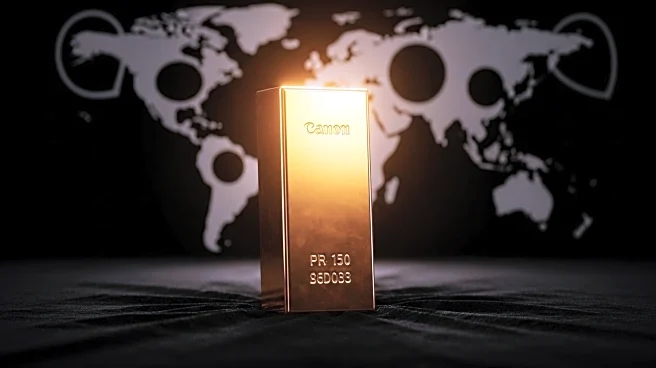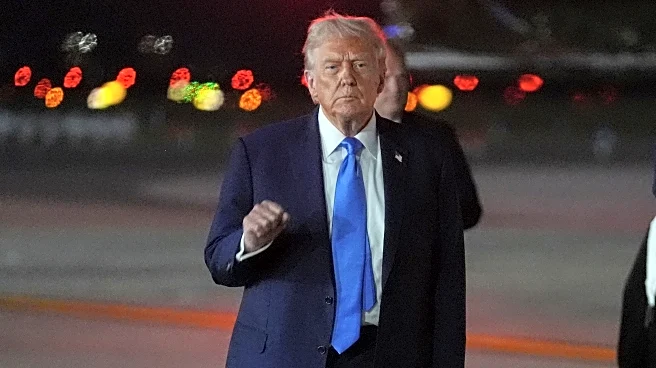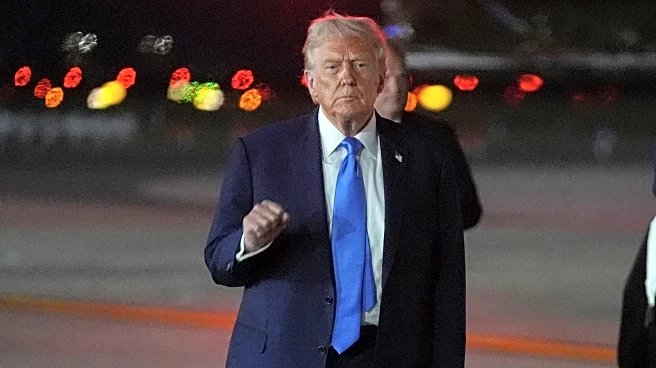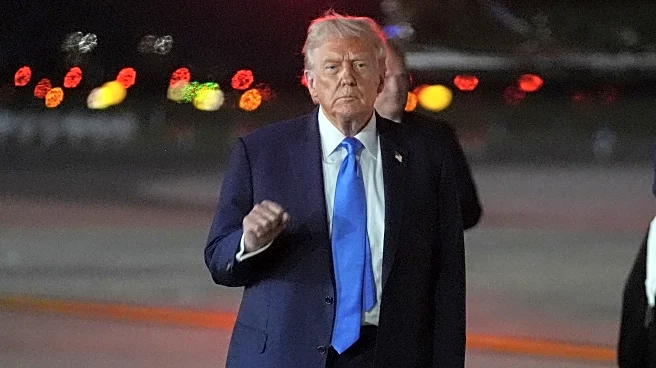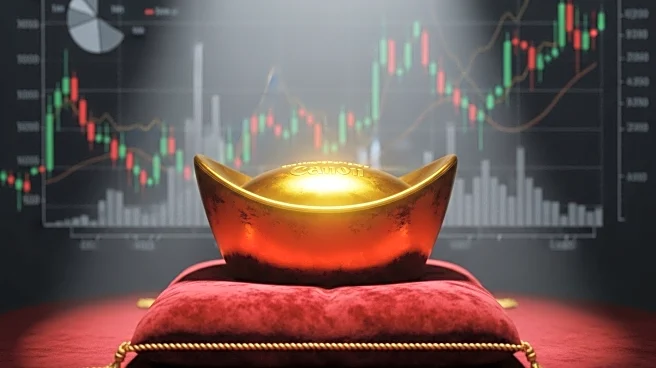What's Happening?
Gold futures have reached a new high of over $3,800, driven by investor interest in the asset as a safe haven amid global economic and geopolitical uncertainties. Deutsche Bank analysts have forecasted that gold prices could exceed $4,000 by the end of the year, potentially marking a full-year return of over 50%. This surge is attributed to factors such as inflation fears, high interest rates, a weaker US dollar, and geopolitical tensions, including the Russia-Ukraine war and the conflict in Gaza. Central banks worldwide are increasing their gold reserves as a precautionary measure during these crises.
Why It's Important?
The rise in gold prices highlights the asset's role as a hedge against inflation and economic instability. As central banks continue to purchase gold, it underscores the metal's perceived reliability during uncertain times. This trend could impact various stakeholders, including investors seeking stable returns and policymakers monitoring economic indicators. The Federal Reserve's recent interest rate cut further enhances gold's attractiveness, as lower Treasury yields make non-interest-bearing assets like gold more appealing.
What's Next?
The Federal Reserve is expected to implement another interest rate cut this year, which could further influence gold prices. Investors and central banks may continue to increase their gold holdings, potentially driving prices higher. The ongoing geopolitical tensions and economic challenges will likely keep gold in focus as a strategic asset for risk management.

